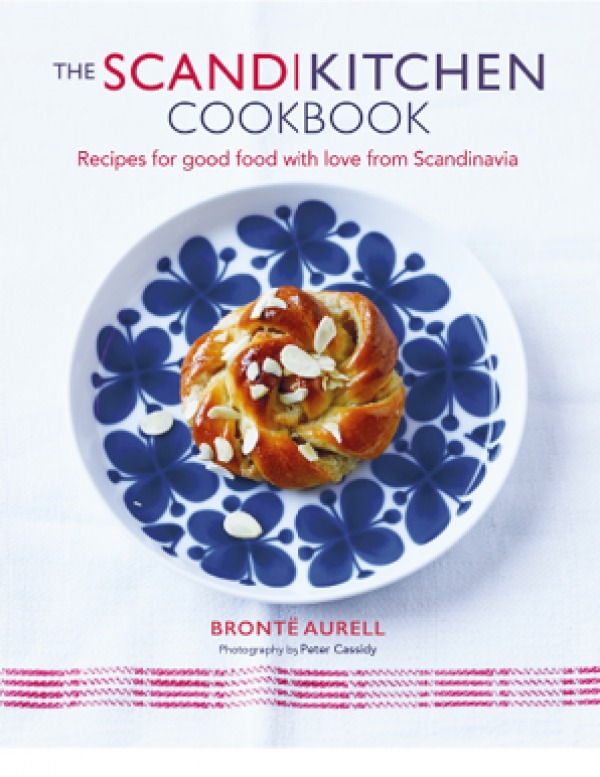
The ScandiKitchen Cookbook
Bronte Aurell
Published by Ryland Peters & Small (£20) Photography by Peter Cassidy © Ryland Peters & Small
Join Our World... Sign up for our exclusive newsletter.

Be inspired every day with Living North

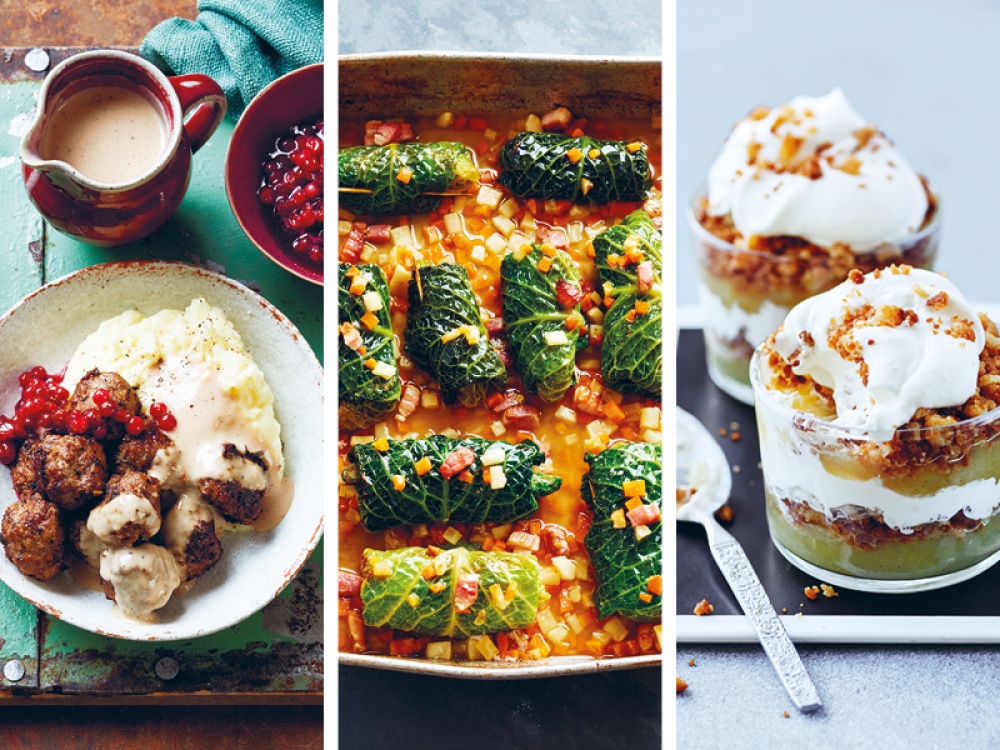
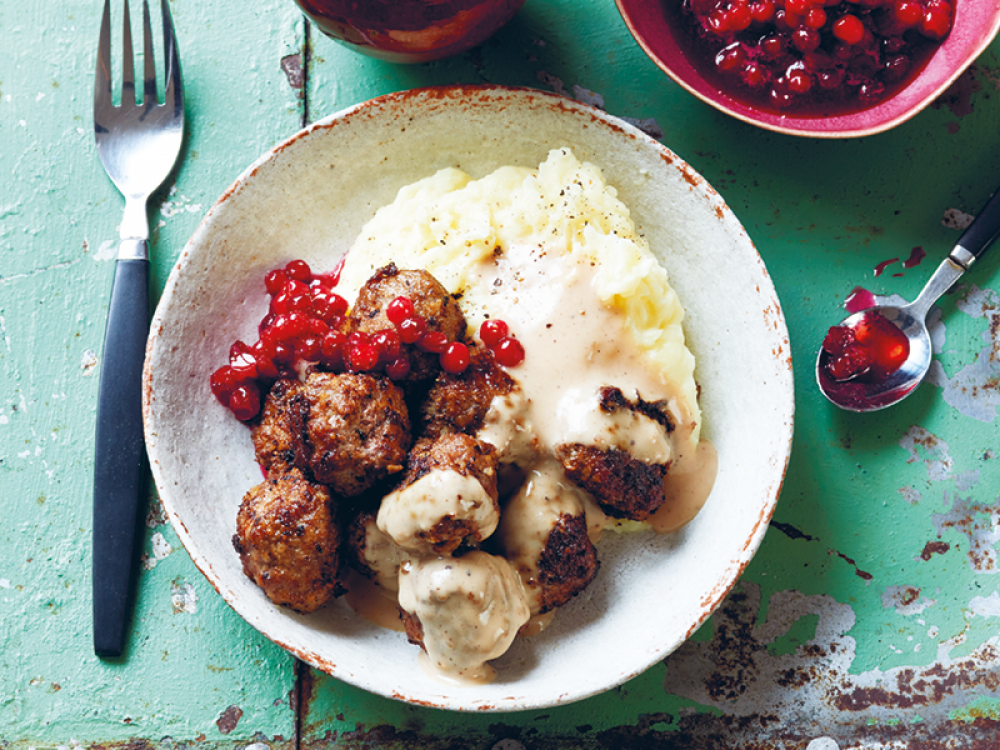
There are as many recipes for meatballs in Scandinavia as there are cooks. Recipes vary regionally too, both in ingredients and sizing. Sadly, nowadays a lot of people buy meatballs instead of making them. The homemade version is so very wholesome and worth the effort. Serve with creamy mashed potato.
If using oats, soak them in the meat or chicken stock for five minutes.
Mix the minced/ground meat with a good pinch of salt for a couple of minutes in a food processor to ensure it’s blended thoroughly.
Add the eggs, flour, spices and Worcestershire or soy sauce to another bowl and mix with the soaked oats or breadcrumbs and grated onion, then add this to the meat mixture.
You’ll have a sticky, but mouldable, mixture. Leave the mixture to rest for 20–25 minutes before using.
Heat up a frying pan/skillet with a small knob/pat of butter or oil and shape one small meatball. Fry it until done and then taste it. Adjust the seasoning according to taste and fry another meatball to test it until you get it just right.
Shape the individual meatballs in your hands – it helps if your hands are damp. Each meatball should be around two-and-a-half centimetres in diameter, or larger if you haven’t got time.
Melt a knob of butter in a frying pan/skillet with a dash of oil and carefully add a few meatballs – make sure there is plenty of room for you to swivel the pan round and help turn them so they get a uniform round shape and do not stick. You’ll most likely need to do this in several batches. Cooking time is usually around five minutes per batch. Keep in a warm oven until needed.
When your meatballs are done, keep the pan on a medium heat. Ensure you have enough fat in there, if not, add a knob of butter to the pan. Add a tablespoon of flour and whisk, then add a splash of stock and whisk again as you bring to the boil. Keep adding stock until you have a good creamy gravy, then add a good dollop of single/light cream and season well with salt and pepper. The colour of the gravy should be very light brown.
To prepare the Stirred Lingonberries (rårörda lingon) simply add the caster/granulated sugar and stir. Leave for a while and then stir again, until the sugar dissolves and the berries have defrosted. Store leftover Stirred Lingonberries in the fridge.
Serve with mashed potatoes.
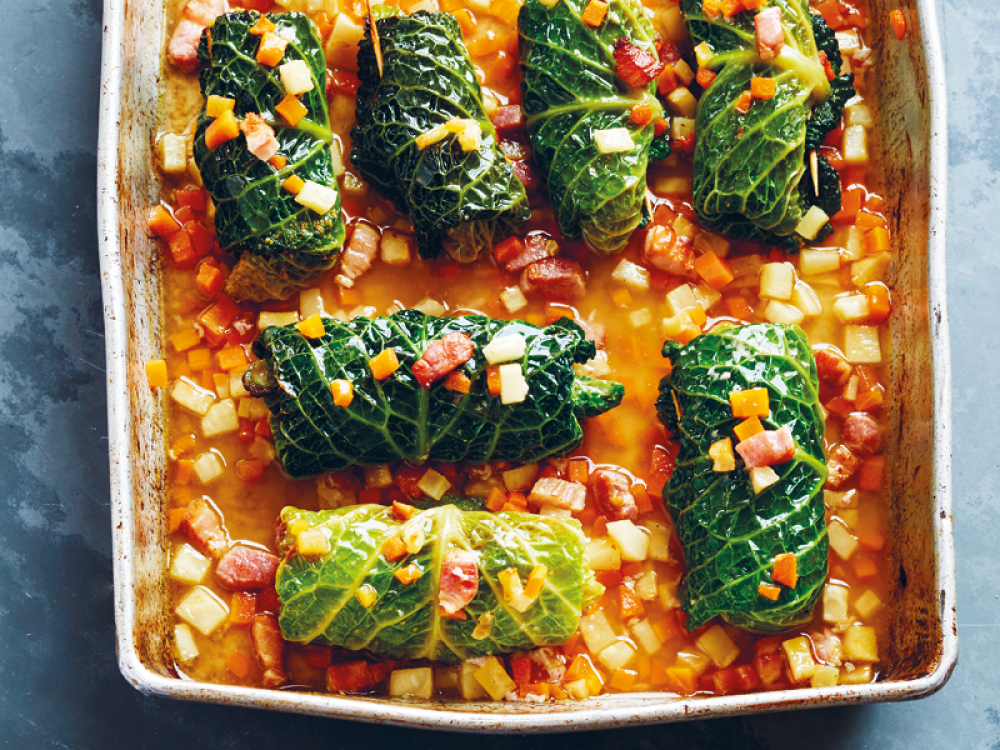
When Swedish King Charles XII returned to Sweden in 1715 after spending five years in the Ottoman Empire, his aides are said to have brought back this dish, what has now become a Swedish classic. Vine leaves were very expensive in Sweden, and the first printed Kåldolmar recipe states that it is acceptable to substitute with boiled cabbage leaves. Over the years, the dish has been further Scandi-fied with the use of pork or beef – and it is served with a good dollop of Stirred Lingonberries and a rich potato mash.
To make the meat mixture, add the pork, beef and salt to a stand mixer and mix well. Soak the breadcrumbs in the milk for a few minutes. Mash the cooked potato with a fork and add to the milk and mix. Add to the meat along with the other ingredients and mix well. Transfer to a bowl and cover. Allow to rest in the fridge for at least 30 minutes before using.
Cut the main bit of stalk out of the base of the cabbage and try to separate the leaves slightly without breaking them.
Steam or boil the cabbage until the leaves are soft – this can take anything from five–10 minutes. Carefully separate the leaves out – you need roughly 20 good-sized unbroken leaves.
Place approximately 60–65g meat in each leaf and wrap it up like a parcel. Secure with string or a cocktail stick/toothpick. You may need to cut away the bottom bit of hard stalk before wrapping the meat up.
Preheat then oven to 180C/Gas 4.
Heat the butter in a frying pan/skillet and cook the bacon. Chop the celeriac and carrot into small cubes and cook for a few minutes until soft. Remove from pan/skillet and set aside.
Heat a few tablespoons of oil in the pan/skillet and fry the cabbage parcels on each side for a minute. Arrange the parcels in an ovenproof dish and scatter over the vegetables and three-quarters of the meat stock. Brush the parcels with a bit of melted butter.
Cook in the preheated oven for 30–40 minutes or until cooked through. Continue to baste the parcels as you cook to prevent them going dry. Add more stock if needed.
Serve with mashed potatoes and Stirred Lingonberries. Use the stock as a sauce (season to taste before serving).
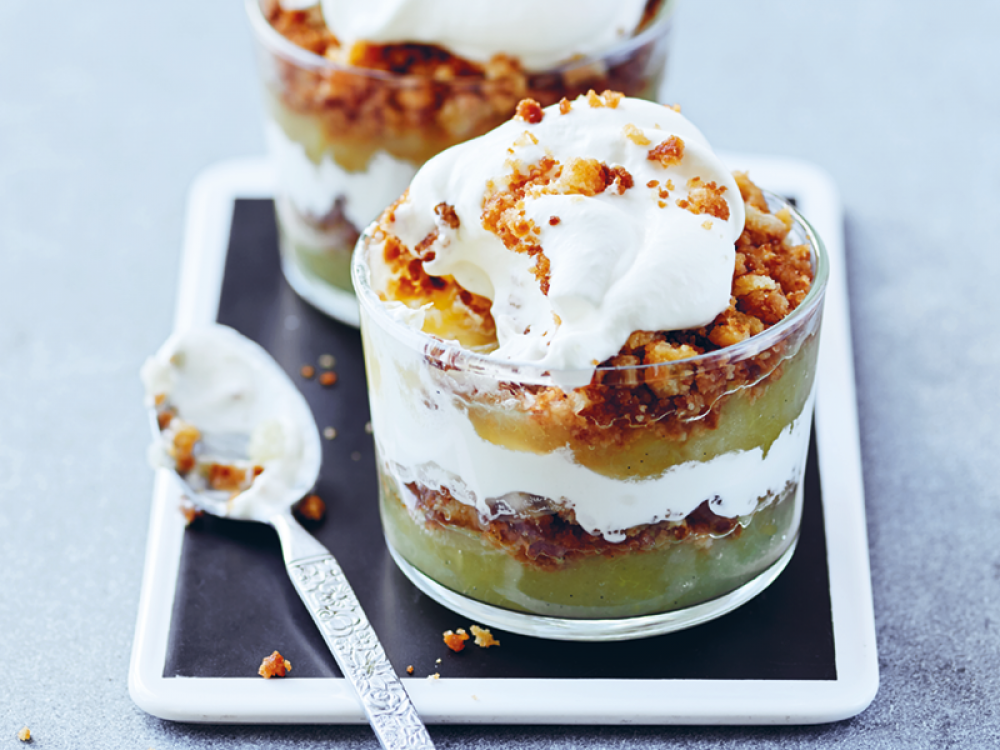
Growing up in Denmark, our garden was full of apple trees and my mother would make this dessert a lot, as we always had cases and cases of apples to get through in the autumn months. A spoonful of this dessert sends me straight back to her warm kitchen...
Cut the apples into bite-sized pieces. Add them to a saucepan along with four tablespoons of sugar, the water and vanilla and cook over a gentle heat until completely soft – around 20 minutes. Add more water if needed during cooking. Leave to cool completely.
In a frying pan/skillet, melt the butter, then add the remaining sugar and stir. Add the breadcrumbs and keep stirring until the mixture is toasted through. Be careful, though, because the breadcrumbs burn easily.
When crispy, remove from the heat and spread on a plate. As the breadcrumbs cool, use your fingers to ensure that they don’t stick in clumps. Whip the cream until stiff peaks form.
Layer your trifle, beginning with a layer of apple, then the breadcrumbs followed by a layer of cream. Add a larger layer of apple and finish with the breadcrumbs (save a few to decorate). Top with the remaining whipped cream and decorate with the remaining breadcrumbs.
Opinion is divided about when to serve this. Some people prefer to serve it straight away while the breadcrumbs are still crunchy. However, in Mamma Lena’s kitchen, we wait a few hours until the trifle has settled.

Published by Ryland Peters & Small (£20) Photography by Peter Cassidy © Ryland Peters & Small